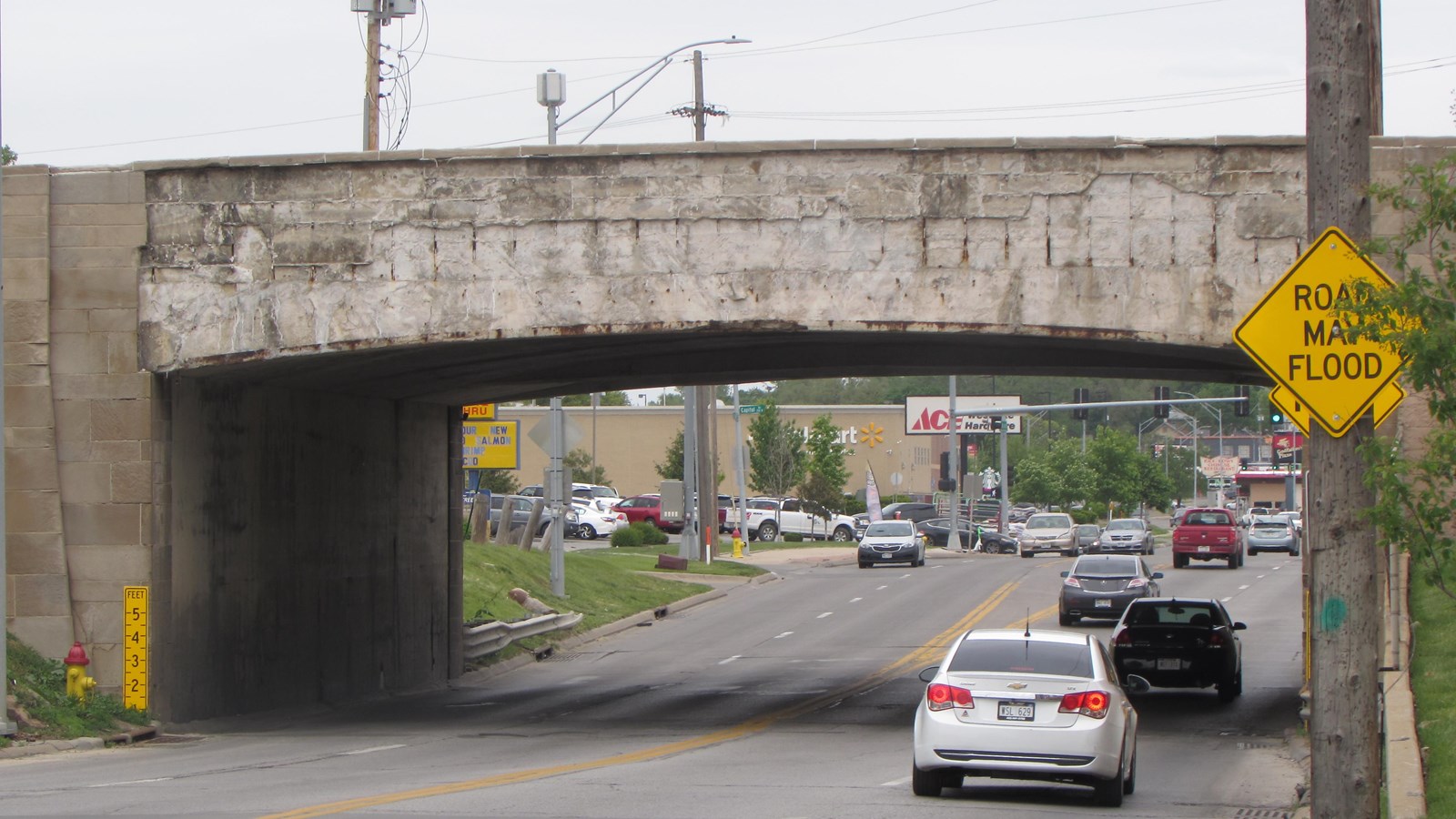Last updated: September 8, 2022
Place
Saddle Creek Underpass

David Calease, NPS
Quick Facts
Location:
US Highway 6 (Dodge Street) over Saddle Creek Road
Significance:
Engineering
Designation:
National Register of Historic Places
MANAGED BY:
City of Omaha
The Saddle Creek Underpass crosses over Saddle Creek Road, acting as the Dodge Street overpass. Remaining essentially unaltered since its construction in 1934, it is listed in the National Register of Historic Places as an excellent example of a structure produced under New Deal relief projects of the 1930s.
Omaha experienced prosperity during the 1920s but faced a crippling economic depression at the end of the decade. In the early years of the Great Depression, overproduction and rising costs caused farm prices to fall to some of the lowest levels in Nebraska history, threatening the Omaha economy. Omaha relied heavily on its ability to transport resources from its hinterlands throughout the nation, and as the agriculture crisis continued, Omaha suffered. Large commercial and industrial establishments were forced to lay off large numbers of employees, causing unemployment to soar. Private, local, and state relief programs in place began to erode under the stress of the Depression, causing the federal government to institute its own national relief programs.
Between 1929 and 1930, manufacturing jobs in Omaha dropped from 16,000 to 11,000. Other industries, however, such as transportation, wholesale, retail, and personal service occupation, held up. New Deal programs also aided Omaha during the Depression and federal employment offset the loss in manufacturing jobs. The federal government provided millions of dollars to Omaha for projects addressing cultural, beautification, and urban services concerns.
The Saddle Creek Underpass was part of a larger federal aid project called the Dodge Street Project which widened various streets in Omaha, implemented a modern street light system, built two pedestrian subways, and undertook a grade separation of Dodge Street and Saddle Creek Boulevard. Of the $660,000 project, about $35,000 was for the construction of the Saddle Creek Underpass.
Omaha experienced prosperity during the 1920s but faced a crippling economic depression at the end of the decade. In the early years of the Great Depression, overproduction and rising costs caused farm prices to fall to some of the lowest levels in Nebraska history, threatening the Omaha economy. Omaha relied heavily on its ability to transport resources from its hinterlands throughout the nation, and as the agriculture crisis continued, Omaha suffered. Large commercial and industrial establishments were forced to lay off large numbers of employees, causing unemployment to soar. Private, local, and state relief programs in place began to erode under the stress of the Depression, causing the federal government to institute its own national relief programs.
Between 1929 and 1930, manufacturing jobs in Omaha dropped from 16,000 to 11,000. Other industries, however, such as transportation, wholesale, retail, and personal service occupation, held up. New Deal programs also aided Omaha during the Depression and federal employment offset the loss in manufacturing jobs. The federal government provided millions of dollars to Omaha for projects addressing cultural, beautification, and urban services concerns.
The Saddle Creek Underpass was part of a larger federal aid project called the Dodge Street Project which widened various streets in Omaha, implemented a modern street light system, built two pedestrian subways, and undertook a grade separation of Dodge Street and Saddle Creek Boulevard. Of the $660,000 project, about $35,000 was for the construction of the Saddle Creek Underpass.
